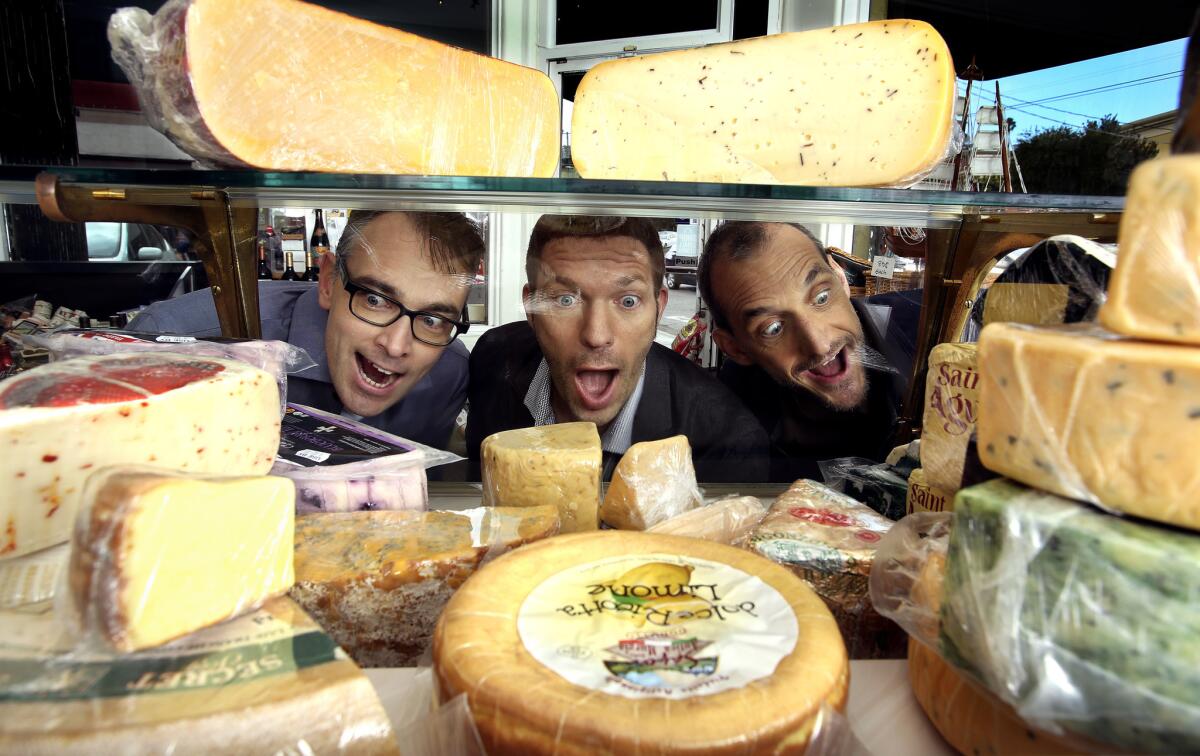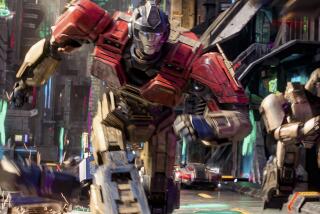‘Boxtrolls’ illustrates how animation houses are playing a new ‘toon

After a recent screening of “The Boxtrolls,” a child approached animator Travis Knight to say he loved the movie because “it was the weirdest thing I’ve ever seen.”
For Knight, president and CEO of Laika, a stop-motion animation company based outside of Portland, Ore., the child’s remark was the highest form of praise. That’s because the 9-year-old studio has found its place in Hollywood’s increasingly crowded animation marketplace by making films slightly left of center, beginning with its first movie, the spooky, Oscar-nominated “Coraline” in 2009.
“Boxtrolls” opened Friday to respectable reviews and $17.3 million in box office, the strongest opening ever for Laika. The film is meant to appeal to audiences looking for something more offbeat than the usual Hollywood animation fare.
“Animation’s never been more popular than it is right now, and yet as a fan there is a generic sameness to so much of what comes out from the big animation houses,” Knight said. “It’s a shame because you can use this extraordinary visual medium to tell really unusual, beautiful stories. ... When someone tells me that it was the weirdest thing they’ve ever seen … to me that shows that they’re engaged.”
Directed by Anthony Stacchi and Graham Annable, “The Boxtrolls” is loosely based on a bestselling children’s book called “Here Be Monsters” by Alan Snow. The boxtrolls are a family of misunderstood, mischievous trash collectors living underground — a kind of steampunk version of “Despicable Me’s” minions who adopt a human boy named Eggs (voiced by Isaac Hempstead Wright of “Game of Thrones”).
Above them on the streets of Cheesebridge, an anti-boxtroll crusader named Archibald Snatcher (Ben Kingsley) is angling for membership in society’s most elite group, the White Hats, who spend their time eating lots of stinky cheese.
Made using a combination of the 100-year-old medium of stop motion along with modern digital animation, “The Boxtrolls” significantly expands on the scope of Laika’s previous film, “ParaNorman.” There’s a complex waltz scene with 150 characters — the stop-motion equivalent of the chariot race in “Ben Hur.” But the studio also relied on what director Stacchi calls “MacGyver moments.” To create moving water, for instance, one of the studio’s riggers used two pieces of shower glass lit from beneath.
As one of the few places in the world still making stop-motion animated films — along with Britain’s Aardman Animations — Laika attracts artists with unusual skills, like the ability to knit tiny sweaters.
“When I walked in while they were making ‘Coraline,’ I was like, “What a bunch of freaks. Now I know where everybody goes when Burning Man’s not happening in the desert — they’re all in this factory,’” Stacchi said.
Knight declined to discuss Laika’s budgets except to say that, taken together, his company’s three films cost less than one movie at the larger animation studios, which typically cost at least $150 million.
“If you’re spending those kind of budgets, you have to be calculatingly populist in your approach,” Knight said. “It has to feel that every possible demographic will help you make that budget back. By keeping our budgets significantly lower than that, we can take more risks, tell stories that are more challenging. If we were spending $150 million on a film, we would have to make this same kind of choices, we’d have to appeal to everybody. But because our threshold of success is lower, we can take more risks.”
Laika is one of a handful of animation businesses — some independent studios, some units within larger film studios — that have emerged in recent years to produce high-quality, often-irreverent work at considerably smaller budgets than the films coming from traditional industry leaders Disney, Pixar and DreamWorks Animation.
This year saw a surprisingly subversive hit, “The Lego Movie,” from Warner Bros.’ new animation unit that somehow managed to tell a story inspired by a toy that mocked both consumerism and Batman; in October, 20th Century Fox will distribute “Book of Life,” a Day of the Dead-set film from Texas-based animation and visual effects company Reel F/X, with strikingly vivid CG animation inspired by Mexican folk art; in December, niche distributor GKIDS will release “Song of the Sea,” a hand-drawn fantasy film from a tiny, Ireland-based company called Cartoon Saloon.
In a category of their own in terms of box-office success are the two “Despicable Me” films from Universal Studios’ animation arm, Illumination Entertainment, which have grossed more than $1.5 billion worldwide and have a spinoff, “The Minion Movie,” due in 2015, and “Despicable Me 3,” due in 2017.
“Conventional thinking was that animated filmmaking was a high-stakes gamble,” said Tom Sito, a professor at USC’s School of Cinematic Arts who was an animator and storyboard artist at Disney Animation in the 1990s. “Only Disney, Pixar and DreamWorks with their brand-loyal audiences seemed to hold a monopoly on success. But the Illumination films seemed to come out of nowhere and were wildly successful. Add to that the success of ‘The Lego Movie,’ and the thinking now is that anyone can play.”
(Japanese telecommunications and Internet company Softbank is in talks to buy DreamWorks Animation, a move that may change the animation landscape even more.)
With no Pixar Animation film due this year, the animated feature Oscar race is missing one of its perennial contenders — and frequent winners — leaving a door open for one of the smaller companies.
As the home of Bugs Bunny, Warner Bros. has a robust animation tradition, but it hadn’t been a major player in feature animation in recent years. With “The Lego Movie,” the studio relaunched its features department in February with a model more like live-action films — it hired “21 Jump Street” and “Cloudy With a Chance of Meatballs” filmmakers Phil Lord and Chris Miller to direct and relied on Australia-based Animal Logic to produce its animation.
“We could have contemplated opening something like a DreamWorks or a Pixar, but those are such entrenched institutions with long histories to them,” said Chris DeFaria, president of animation, digital production and visual effects at Warner Bros. “What we set out to do was to make great animated movies but in a way Warner Bros. knows how to make movies.”
Follow me on Twitter: @ThatRebecca
More to Read
Only good movies
Get the Indie Focus newsletter, Mark Olsen's weekly guide to the world of cinema.
You may occasionally receive promotional content from the Los Angeles Times.











